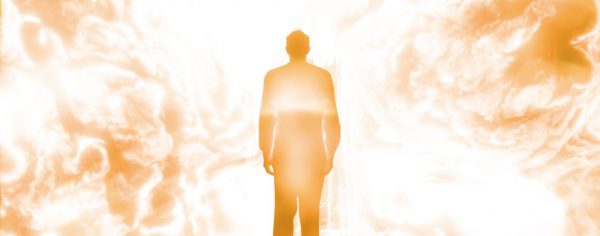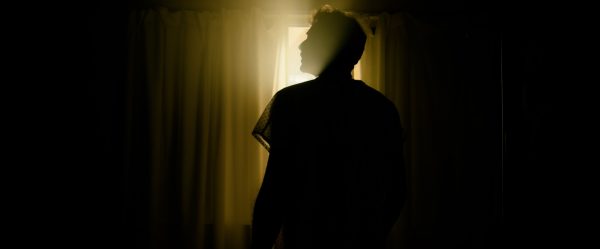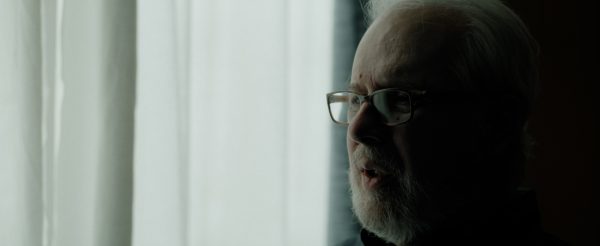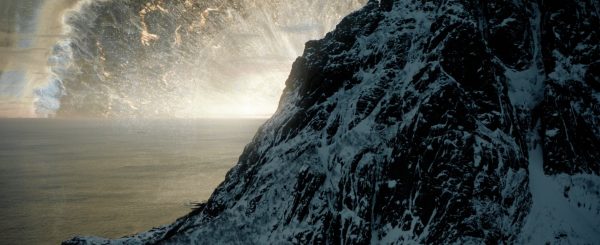‘After Death’ sheds light on what comes next

“After Death” (2023). Cast: Interviews: Raymond Moody, Michael Sabom, Mary Neal, John Burke, Jeffrey Long, Ajmal Zemmar, Karl Greene, Howard Storm, Dale Black, Don Piper, Eva Piper, Steve Kang, Paul Ojeda; Archive Interviews: Robert Spetzler, Pam Reynolds; Re-enactments: Doug Lito, Koko Marshall, Nick McCloud, Nicholas Saenz, Kate Duffy, Fabian Jaime, Ryan Mcarthy, Chetavious Davis. Directors: Stephen Gray and Chris Radtke. Screenplay: Stephen Gray. Web site. Trailer.
This new offering from directors Stephen Gray and Chris Radtke provides viewers with a comprehensive look at a subject that was once considered suspect – even laughable – but is now taken quite seriously, including by those who were once among its greatest detractors. The film presents a detailed look at the phenomenon, featuring interviews with such researchers as Raymond Moody, who’s often credited as being primarily responsible for bringing NDEs into the mainstream dialogue, and those who have experienced these events. It also presents a series of NDE re-enactments, including depictions of what led up to them and what happened as the experiences unfolded, all backed by stunningly gorgeous CGI effects of an admittedly indescribable reality and a beautifully emotive original score.
So what characterizes these events? While everyone’s experience is highly personal, there are several elements that occur frequently and often typify what NDEs are all about. Those who are victims of accidents or trauma or who have undergone medical emergencies generally find themselves floating above their bodies, witnessing everything that’s transpiring underneath them. They’re often able to describe the scenes as they unfolded in remarkable detail, including particulars that they couldn’t have otherwise known about, given that their corporeal selves were unconscious at the time. They’re able to recall who was present, what they were saying and what measures the caregivers took to treat them. And these accounts are often extraordinarily credible for their specificity.

Consider, for example, the experience of pilot Dale Black, whose twin-engine plane crashed into the 100-foot-tall Portal of the Folded Wings aviation shrine in Valhalla Cemetery in Burbank, CA in July 1969. At the time of the crash, the plane was traveling at approximately 135 mph, and Black was the sole survivor. But, when the tragedy happened, Black was initially unsure what had happened. He looked around and saw the debris field, as well as the dead bodies of the other passengers. But what was going on with him, especially when he saw himself unconscious on the ground? After recovering, he would later describe the crash site in great detail, something he could only have seen if he were viewing the scene from above, a viewpoint that most of us typically don’t associate with conventional waking consciousness.
After such disembodied viewings, experiencers next usually find themselves in states of what appear to be perfect health, cured of whatever put them in the NDE state of mind. And, from there, they frequently experience feelings of tremendous peace, free of whatever worldly concerns may have been troubling them. They see brilliantly bright light and hear angelic music, what they often describe as the most beautiful sound they’ve ever heard.
Such was the experience of orthopedic surgeon Dr. Mary Neal, who traveled to South America for a whitewater kayaking trip, one of her great passions. However, not long into her first river run, her kayak overturned, submerging her in a location that was difficult for rescuers to reach. She was underwater for 30 minutes, during which she had an NDE characterized by the foregoing conditions. But it went beyond that, too, connecting her to the next set of elements that many experiencers encounter.

Many of those who return from their NDEs say that they next find themselves in the company of a divine presence, one that can take various forms, be they angels, Jesus or God, generally based on the religious or spiritual traditions from which they adhered. They’re also frequently greeted by deceased loved ones who provide them with warm, loving, welcoming greetings. At this stage, they frequently receive guidance on what is to happen next, be it moving forward to the next state of existence or returning from whence they came, typically to complete unfinished business and/or to carry out new earthly missions. The choice is placed in the hands of the experiencers, who are free to decide what is best for them and for those closest to them.
So it was for Don Piper, whose car was struck head-on by a semi-truck in 1989. He was declared dead at the accident scene, but, 90 minutes later, he was revived, having had an experience in which he had a profound encounter with God. This incredibly vivid experience changed his life, prompting him to change course, something he did after a long recovery involving 34 surgeries. It enabled him to find a “new normal” for his daily existence.
As uplifting as these experiences can be, however, not everyone undergoes conditions that are quite as pleasant. Some have nightmarish encounters with terrifying beings that bring them face to face with some of the harsh truths of the lives they’ve been living. It forces them to take drastic measures to save themselves, often making pleas to the divine for assistance and guidance, requests that are subsequently answered with advice on how to proceed.
Such was the case with Steve Kang, who attempted a violent suicide in front of family members, and Howard Storm, who experienced an acute medical emergency as a result of a duodenal perforation. Both underwent what could only be described as descents into hell that called upon them to tap into their consciousness to save themselves with the aid of divine intervention. They came back from these experiences as changed individuals, initiatives they put into action upon their return.
The implementation of such fundamental changes is the single-most important takeaway that NDE experiencers have in common with one another. In many ways, experiencers are different people afterward than they were beforehand. They also openly acknowledge that they’re no longer afraid of death; having experienced “a preview” of the afterlife is generally enough to put their minds at ease, a message that they actively seek to convey to others as one of their chief reasons for coming back.

Considering the intangible nature of NDEs, what’s ultimately most important in all this is what we each believe about them, as our beliefs determine how our reality plays out, a product of the conscious creation process, the philosophy governing the manifestation of what we experience. According to this school of thought, our beliefs are highly personal, individualized perspectives on how we view such matters. Yet, when it comes to this subject, it’s uncanny how many of us have similar experiences. Could it be that the beliefs governing this aspect of existence have a certain universality underlying them, one that impacts all or most of us in this endeavor? And could it also be that the manifestation process that applies to crossing the threshold to the afterlife arises from the same fundamental belief-based foundation that’s employed in manifesting our lives in physical existence?

Some might argue that, if the manifesting beliefs are basically the same for all of us when we undergo this transition, then how do we account for the particularized aspects of personal intents? Admittedly, that’s a point with some merit. However, as the examples in this film illustrate, even though NDEs tend to possess certain similarities, there are nuanced differences in each individual’s beliefs at the time of death, which, in turn, affect what’s experienced. Some embark on a heavenly odyssey, while others go through trials, tribulations and passages to redemption. Likewise, some interact with the Christ consciousness, while others commune with the avatars of other faiths. And still others are sent back, while others are given a choice about what they want to do.
These variations are not unlike those that we experience on the physical plane. We all possess certain attributes and have mutual experiences in common, but there are distinguishing qualities that set us apart, too. Some of us become artists while others become laborers. Some of us are tall, thin and athletic while others turn out short, fat and clumsy. Moreover, some of us are jovial and gregarious while others are painfully shy wallflowers. In each of these cases, though, the particulars of our existence in the physical world emerge from the beliefs we put out, just as they apparently do when we die and move on to whatever comes next, despite whatever commonalities we might possess.
That’s an important notion to keep in mind as we approach our time of transition. In death, as in life, it seems that we possess the power of choice to help determine how things turn out. And that power is driven by the beliefs we hold as we move forward. That being the case, then, we should be prepared to choose wisely.
This consideration can prove particularly helpful when it comes to making choices about the life lessons we’re seeking to learn and experience, be it making decisions about the life to which we plan to return or in moving on to whatever comes next. As often becomes apparent during NDEs, experiencers frequently gain a new understanding of and appreciation for what life is all about – the opportunity to learn valuable lessons that aid in the personal and spiritual growth of our soul. It’s an insight not to be taken lightly and one for which we should carefully consider the choices we make.
In light of that, based on what’s depicted here, the time of passing would appear to be a time of opportunity, one in which our beliefs play a vital role in what manifests. And, considering the NDEs of the experiencers profiled here, we shouldn’t fear what lies ahead, given that many of us can face the prospect of being welcomed into a warm and lovingly supported existence, one in which a divine partner has our best interests at heart. It’s a time when this celestial collaborator is ready to assist us in our afterlife endeavors in much the same way as it does in our corporeal ventures. What’s to be afraid of in that?

The filmmakers behind this release present viewers with an excellent overview of what make up NDEs while simultaneously conveying the obviously heartfelt emotions associated with them, bringing the experiences home to audiences in a way that other documentaries on the subject haven’t previously been able to accomplish. It sheds profound light on what can happen when one goes through these existential gateways and how returnees are often fundamentally changed by the experiences, giving them new outlooks on life and their purpose in it. While it’s true that this offering doesn’t present much that’s especially new about NDEs and that its pacing can be a little slow (and redundant) at times, it nevertheless does a superb job of immersing viewers in the material, again, a big improvement over previous attempts at addressing this subject. And pay no heed to the cynics who have erroneously called this little more than religious propaganda; while it’s true there are some Christian-oriented references scattered throughout the film, the overall take here is more spiritual in nature, an ecumenical approach at examining the afterlife than one that’s exclusively rooted in any particular theological tradition. Viewers who may have been skeptical, unfamiliar with or skittish about this subject may find themselves surprisingly enlightened by what this release has to say. And the fact that it has been playing widely in mainstream theaters to astonishingly well-attended audiences also speaks volumes about the appeal of this title, a rare feat for a documentary on an esoteric topic. As this film so astutely shows, death isn’t the end – and it’s high time we stopped looking at it that way.
Charting new territory can be a daunting prospect for some of us, especially when it comes to a subject like this, one that has long been tainted by fears and unknowns. However, if knowledge is indeed power, then what this documentary has to offer could prove to be invaluable to those filled with doubts and apprehensions. It makes a compelling case about what lies ahead and why we shouldn’t fear it. To be sure, no one wants to go before his or her time, but, with that said, we shouldn’t be afraid of what will happen when that time eventually comes. And, given what we see here, we can assuredly take comfort in that.
Copyright © 2023, by Brent Marchant. All rights reserved.



